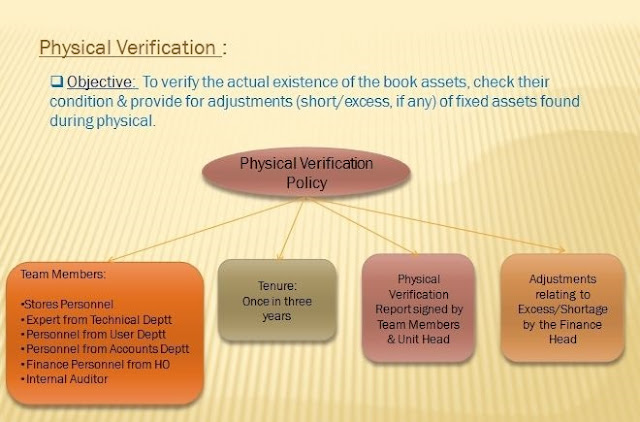Physical verification of inventory is an uphill task for retailers. Being a tedious task, it not only takes hours but is also a function with higher possibilities of making errors. Although physical verification is a difficult task, taking a physical count of inventory is a must. As a business operating in the retail sector, you might already be aware that there are various challenges in the process of physical verification.
To make the physical verification task easier for you, we have noted down few practical tips that you can establish in your inventory verification and counting process. Let’s check them out:

1. Cycle counting helps in streamlining physical counting of inventory
Partial stock taking or cycle counting is a process of counting inventory continuously to monitor the stock levels without causing an interruption in the flow of your business operation. Cycle counting is one of the most efficient stocks taking methods for retailers. It allows a better inventory control.
In case cycle counting is not practical for you, you can use the other tips mentioned below to optimize your physical verification process.

2. Incorporate stock taking technologies and systems
Traditionally, retailers used pen and paper for physical counting of inventory. This method of staff tallying the inventory sheets to reconcile the data in their system with the actual physical inventory is tedious.
Making double entry was one of the major causes of inefficiency in the traditional method. And not to mention, the scope of human error. With the advancement of technology, retailers can use inventory scanners or other stock counting technology to make physical verification of inventory easy and effective.
If you invest in stock taking technologies, you can optimize the whole chain which turns out to be cost-effective in the longer run. You can also incorporate these tools into an integrated business solution. This will allow you to handle your inventory’s physical counting and accounting aspects simultaneously.
3. Hiring the right people for the right task
When you are choosing staff for physical counting, you need to choose right people for such a crucial task. Many small and medium retail businesses have a habit of assign the inventory counting task to their regular employees which proves to be a huge mistake. You need to hire seasoned employees for this task who are familiar with such detailed task.
4. Well-scheduled physical inventory at regular intervals
If you are conducting a full physical verification of inventory, you must schedule it an effective manner. Often, SMEs fail to properly plan their physical verification causing them problems which affect the whole business operation cycle. They can regularise their physical verification with some assistance from physical verification or inventory consultants.
You need to schedule your full physical counting efficiently to reap all the benefits from it. Apart from scheduling it strategically, you need to conduct it at regular intervals to keep up with your stock levels.
5. List down the inventory goods in transit or damaged goods
When you are physically counting your inventory, one of the most common mistake you can make is skipping some categories of inventory from the count. Items that are in transit, returning or are damaged get skipped during the count which is not the right method. You need to count these good to avoid confusion later.
6. Rechecking after count
Double checking and auditing your inventory counts as soon as possible is important to ensure the accuracy of your inventory. Not only auditing your inventory improves the efficiency of your inventory counting but also allows better control over it.
7. Analysing inventory reports
Inventory reporting is an essential in the retail industry as it enhances inventory control. Pulling up inventory data and analyzing it helps in obtaining actionable insights. This also helps you to pinpoint the high-risk zones allowing to minimize your losses.
By comparing multiple inventory count reports, you can identify patterns that are causing losses. You can use the physical verification data and report insights to take preventive actions.

8. Map your inventory store
Before you start physical verification of inventory, you need to map or sketch out your warehouse or store. Mapping will provide you a handy checklist of which places you have to cover and products you have to count. It will also make delegation of work easier. You can assign different sections to different people.
9. Focus on labeling and shelving
Now, you must understand that you cannot complete the physical verification task efficiently if you are blind. Well, if your warehouse or store is not organized it is making you blind towards many items that are physically present but not counted. To solve such situation, you need to organize your warehouse or store by adding shelves and boxes to store the items. You must also label or mark these boxes and shelves for easy identification.
10. 80/20 principle
Depending on your industry, you can apply 80/20 principle. 80% sales come from 20% stock in various industries. Thus, purchase of inventory can be decided by analyzing sales pattern. If you apply this principle, you must purchase a greater percentage of the items which are popular among your customers or have higher sales. Ordering higher percentage of those items will save cost due to a single order.
A smooth and effective physical verification process does not happen by chance. You will have to invest your time to plan it and upgrade it from time to time. A robust physical inventory process can add value to your retail business.








 CAclubindia
CAclubindia
